Off-roading is one of the best ways to connect with nature, test your rig’s capabilities, and experience Virginia’s rugged terrain in its rawest form. But when the rain starts falling and the trails turn to mud, that sense of adventure can quickly turn into a dangerous, costly, and environmentally harmful situation.
At VA Off-Road, we’re all about promoting responsible trail use. That’s why we’re tackling a topic that every off-roader has considered at one point or another: should you go 4-wheeling in the rain? The short answer is usually no, and in this article, we’ll dive deep into the reasons why. From environmental concerns and vehicle safety to trail damage and accessibility, here’s why it’s often best to park your rig until the skies clear up.
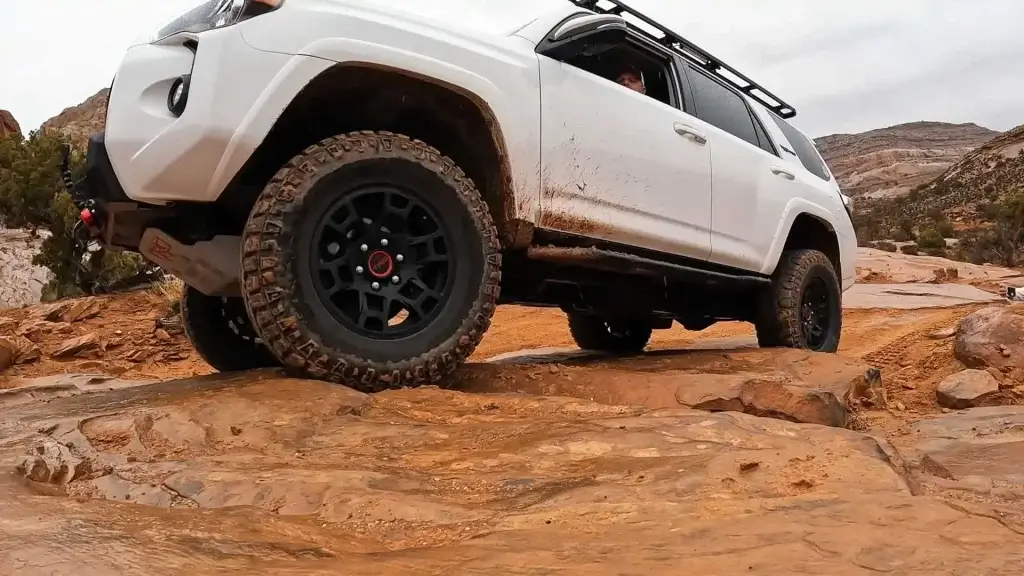
1. Trail Destruction is Real — and Often Irreversible
Erosion: The Hidden Enemy
Virginia trails like the Bald Mountain Jeep Trail and Flagpole Knob are known for their stunning vistas and moderate challenges—but those same trails are also incredibly vulnerable to erosion when wet. Even light rain can soften dirt paths and expose sediment, making them fragile under the weight of a 4×4. Add spinning tires and sudden acceleration, and you’ve got a recipe for washouts and deep rutting.
“Every time someone rips through a muddy trail for fun, they set that trail back years in terms of sustainability. It’s not just a rut—it’s a scar on the land.”
— Joshua Gabrielson, Founder of VA Off-Road
Trail restoration isn’t cheap or easy. In fact, many land management agencies and clubs have closed access to prime off-roading routes because of repeated damage during or after rainstorms. Your one-time joyride could lead to permanent trail closure for everyone.
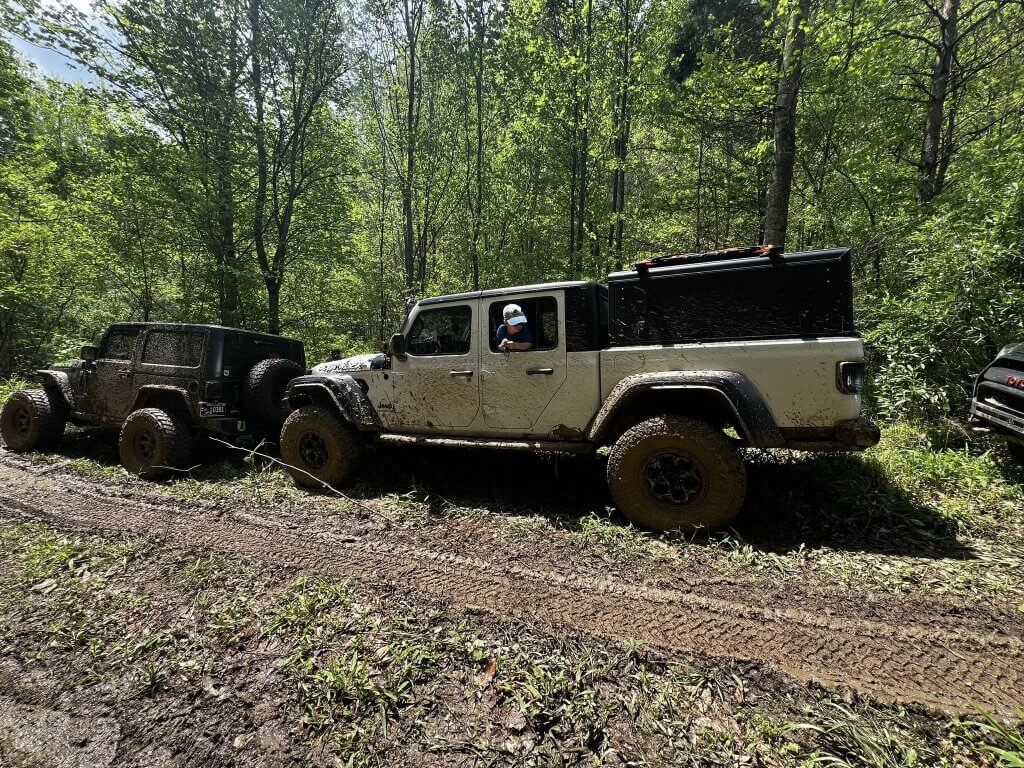
2. Mud Isn’t Always Fun — It Can Be Dangerous
Hydroplaning and Traction Loss
Mud may sound like fun, but the slick conditions created by rain significantly reduce your tires’ grip on the trail. Even experienced drivers have been known to slide sideways into ditches or lose momentum on uphill climbs. It’s not just about getting dirty—it’s about getting stuck or even injured.
This is especially true on trails like Peters Mill Run, which features sections of slick shale and loose gravel. During or after rain, these areas become so treacherous that even built rigs with aggressive tires can struggle.
Recovery Risks
Getting stuck in the mud means pulling out winches, straps, and snatch blocks—often on unstable footing. Recovery during rainfall or in wet conditions increases the risk of injury, particularly from winch lines under tension or slipping on mud-covered terrain.
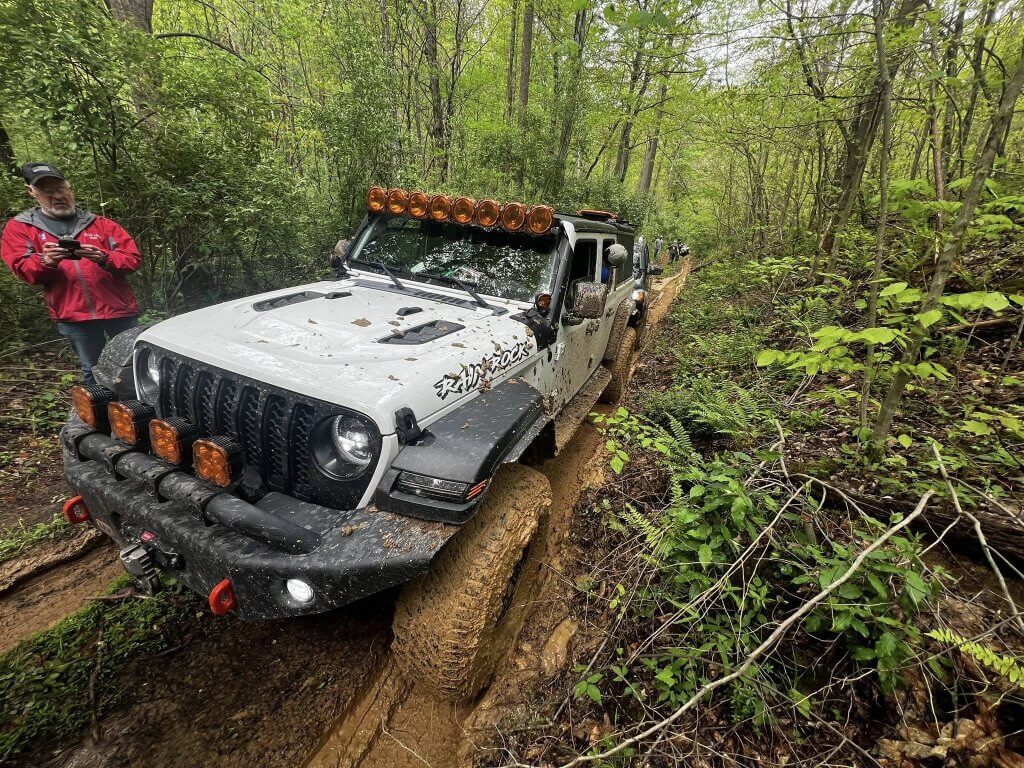
3. Damage to Your Rig (And Wallet)
Water isn’t your 4×4’s best friend. Here’s why rainy rides can result in expensive repairs:
- Waterlogged Air Filters: Driving through puddles or flooding areas can cause your engine to ingest water, a condition known as hydro-locking, which can destroy an engine almost instantly.
- Brake Fade: Wet brakes lose friction, making your rig less responsive. On a steep trail descent, this could spell disaster.
- Electrical Shorts: Rain can seep into connectors and electronics, leading to annoying and expensive issues later on.
Even water-resistant vehicles like the Toyota 4Runner and Jeep Wrangler aren’t immune. And don’t think your lift kit or snorkel will save you—water can find a way in if you’re not careful.
4. Limited Visibility = Higher Risk
Rain doesn’t just soak the ground—it soaks your view, too. Foggy windows, mud on windshields, and impaired visibility from heavy rainfall make navigating tight or technical trails like Kephart Run far more difficult. In dense woods or areas with steep drop-offs, that kind of limited visibility can lead to tipping hazards or worse.
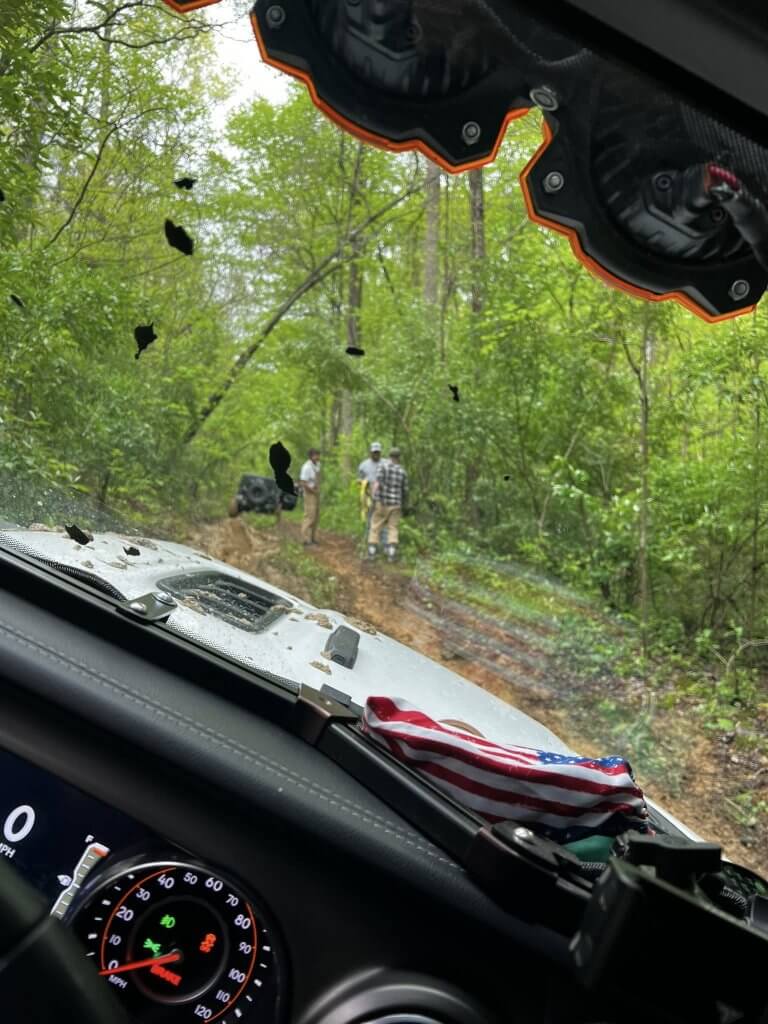
5. It’s Not Just About You — It’s About the Community
Trail Closures Are Often Preventable
Organizations like VA Off-Road and the U.S. Forest Service work hard to keep Virginia’s trails open and accessible. But when trail stewards report extensive mud damage or unsafe conditions due to rain-driven abuse, they often have no choice but to temporarily (or permanently) shut them down.
That means fewer trails for all of us—and the loss of hard-earned trust between off-roaders and land managers.
Public Image Matters
The off-road community already faces criticism from environmentalists and some public land users. Irresponsible behavior—especially mudding during or right after a storm—fuels negative stereotypes and threatens the entire hobby. We must hold ourselves to a higher standard.
“When we self-regulate and stay off the trails during storms, we show that we care about the land more than the adrenaline. That’s what responsible off-roading looks like.”
— Barry Hicks, VA Off-Road Member and Trail Educator
6. Your Tires Aren’t Invincible (Even Mud-Terrains)
You might think your BFGoodrich KM3s or Goodyear Wrangler Duratracs can handle anything, but wet Virginia clay can turn any trail into a slip-n-slide. Some types of mud build up on treads and “balloon” your tires, rendering them almost useless. Add rain to the mix, and even the best tires will be outmatched.
7. Wildlife and Habitat Disruption
Rain often forces wildlife to seek shelter and creates more sensitive conditions for their habitats. Driving through soaked trails can crush amphibians, disturb nesting areas, and contaminate water runoff with oil and sediment.
If you love Virginia’s backcountry, respect it enough to avoid trail runs during or immediately after heavy rain. Nature deserves a break to recover.
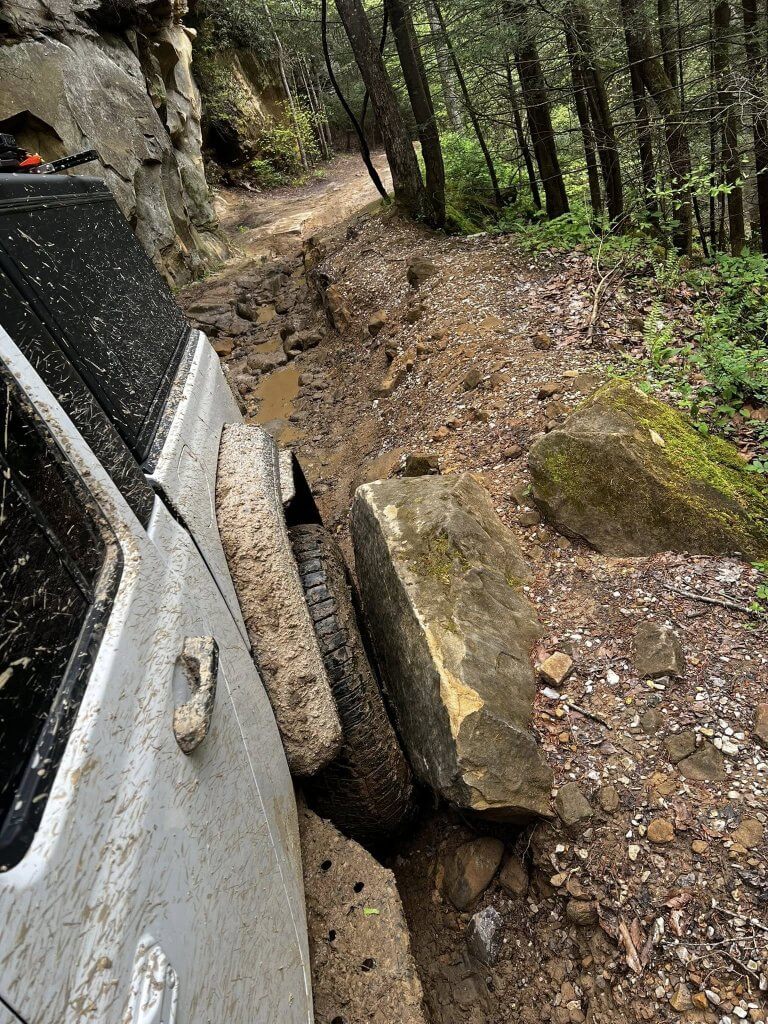
8. Wet Trails Take Longer to Dry Than You Think
Many off-roaders assume that once the rain stops, the trail is fair game. Not so fast.
Bald Mountain, for instance, has multiple sections that remain waterlogged for days. Driving on it 12 hours after a storm is just as damaging as during the rain itself.
Rule of thumb? Wait at least 48 hours after heavy rainfall before returning to most Virginia trails, and longer for heavily wooded or clay-based areas.
9. Legal and Insurance Liabilities
While most off-roading is done at your own risk, getting stuck, damaging public property, or causing injury during poor conditions could expose you to liability. Insurance companies are increasingly scrutinizing off-road claims, especially those that happen during storms or in obviously dangerous conditions.
If you’re trespassing or damaging restricted lands—some of which become more fragile and better monitored in the rain—you could face fines or even misdemeanor charges.
10. Alternatives That Are Actually Better
If you’re itching to test your rig or get some seat time during rainy weather, consider these instead:
- Join a wrenching day with your local VA Off-Road group
- Attend a safety clinic or virtual trail class
- Scout a trail on foot to learn more about its layout and terrain
- Help maintain or repair a trail with a volunteer crew
You’ll earn major respect, improve your skills, and contribute to the off-road community without harming the land.
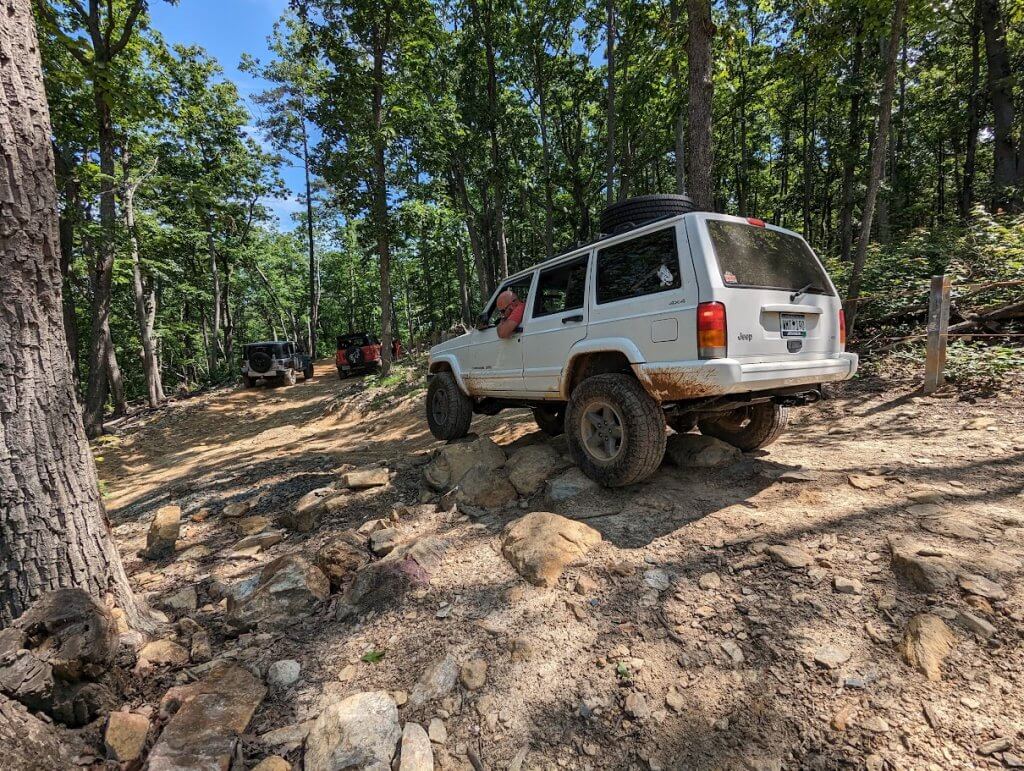
Trail Spotlight: When Rain Makes These Spots Off-Limits
Let’s highlight a few popular VA Off-Road trails where rain can be especially problematic:
1. Bald Mountain Jeep Trail
- Why to avoid in rain: Heavy clay and rocky inclines become a recipe for tire spin and trail gouging.
- Better time to visit: 2–3 days after a dry spell in spring or fall.
2. Flagpole Knob via Union Springs
- Why to avoid in rain: High elevation and rocky ridge lines get very slick, with deep erosion channels.
- Better time to visit: Summer mornings after dry weeks.
3. Kephart Run
- Why to avoid in rain: Water runoff collects at lower trail sections, turning parts into deep pits.
- Better time to visit: Mid-week to avoid crowds after at least 48 hours of dry weather.
Final Word: Think Beyond the Mud
We all love a good challenge. But true off-roaders know when to push forward and when to hit pause. Rain doesn’t just change the trail—it changes the consequences. Before heading out on a wet day, ask yourself:
- Could I damage the trail or my rig?
- Will I be putting others at risk?
- Is there a better way to enjoy off-roading today?
If the answer to any of those is yes, stash the keys, join the conversation on VAOffRoad.org, and help us protect the trails we love for generations to come.
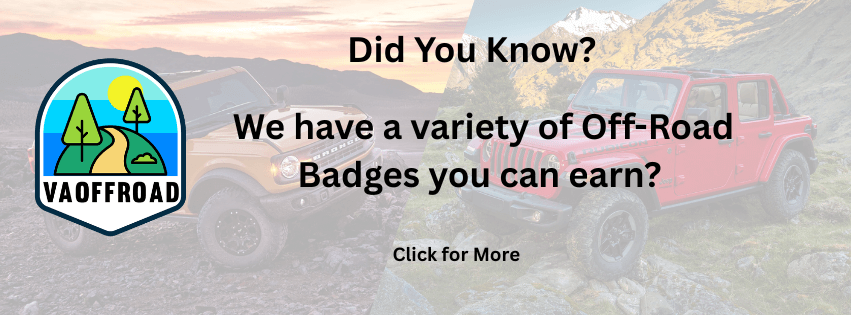

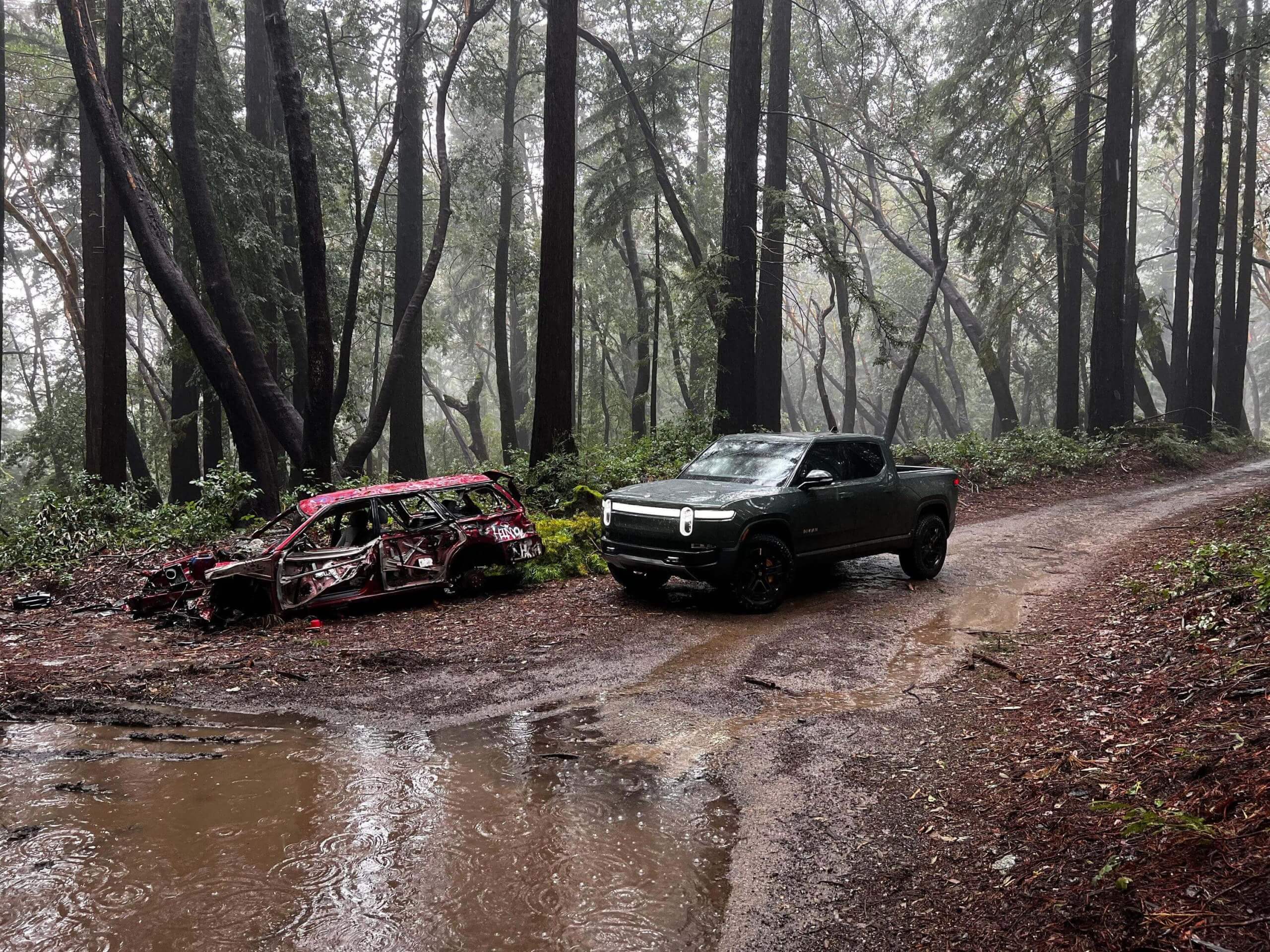

No responses yet